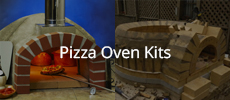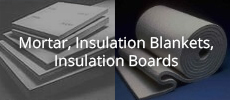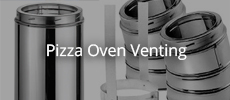Re: Electric heating of my WFO
Interesting. I was going to suggest a PID controller.
might be an interesting approach to a WFO-based smoker - Wood chips on a PID controlled hot plate. Control the temp and get the smoke as a by product.
I had been thinking about some sort PID-controlled door fan setup for a smoker - but a hot plate may be a better approach.
One thing for sure, I know that it seems to take a lot less wood to get an oven from say - 300 to pizza temps than it does to go from ambient. That first bit of the curve seems super steep in terms of power consumption. Where I live, electricity is relatively cheap. Might make sense for me as a pre-heat option too.
Announcement
Collapse
No announcement yet.
Electric heating of my WFO
Collapse
X
-
Re: Electric heating of my WFO
12V, I'm going to cheat for awhile by connecting a PID controller, just a DYI Sous Vide setup, connected to a "Plug Power Meter Energy Watt Voltage Amps Meter with Electricity Usage Monitor". Again ideally I be logging everything in some interval that would show me when near saturation is achieved and what the power demand to maintain this is. I'll get it.. After this I'll need to calculate the solar panels required to supply the power to maintain these temps. In the end it might be much easier to feed the grid via solar and pull what I need out of the grid.
Chris
Leave a comment:
-
Re: Electric heating of my WFO
Chris,Originally posted by SCChris View Post
I'm really curious just how efficient my oven is, just how much power will be required to hold 300F after saturation.
Chris
First: Estimate the volume of your oven: which is the difference between the volumes of two hemispheres; one is the outer surface of the oven, and the second is the inner one.
Second: Using the volume, estimate the weight of the whole mass of the bricks: Density of bricks =2.1 g/cm^3
Third:bring the oven to 300F, and seal the insulated door. Wait for a given time (2 hr say), and then measure the temperature. It did certainly drop during that given period. calculate the drop in temperature. This is (dt)
Eventually, the loss in thermal energy (that has to be compensated by your heater) is given by:
Q = c m dt
Q: thermal energy (loss or gain) Unit: calory
dt: temperature change (already known) Unit: degrees Celsius
m: mass of the brick oven (already known) Unit:gram
c: specific heat of bricks (c=0.2 cal/g) for bricks
You have dt already calculated, m (the mass) is also known beforehand, and c (specific heat of bricks) is a constant that is equal to (0.2)
Given all that, by compensating in the equation, Q will be known which is the loss in thermal energy that your heater has to compensate for. Thus you will know how much heat for the given period you have decided (not necessarily 2 hours) is required to maintain 300 F.
You would better repeat the experiment several times and compare the results so to validate, and then take the average, then keep your self safe by being enough over the resultant value.
HTH
This thread may be useful too.
PS: The values provided here are estimates that change w.r.t brick type humidity, and other factors. google these values for more accuracy.
The Q equation has (c) to change slightly w.r.t. temperature regarding solids. But it can be considered constant under some tolerance in the WFO rating temperatures.Last edited by v12spirit; 09-22-2014, 11:29 AM.
Leave a comment:
-
Re: Electric heating of my WFO
The direct PV current would only feed during sunny periods but of course batteries could be used as storage and these could feed the heat during dark times. This initially adds $ and complexity to the system but could minimize the oven's temp swings. It'll be interesting to see what the heat loss ultimately is once near complete structure saturation is achieved. What will it take to maintain 300F? 150W, 300W, I have no idea what I'm going to find..
I'd like to automate the gathering of the oven temps at 5 minute intervals and then correlate these to the energy input on this same interval. At some point the plotted curves will flatten and amount of energy to maintain a given temperature will become clear.
Chris
I'll need this conversion after awhile.
1 btu = 0.00029307107 kilowatt hoursLast edited by SCChris; 09-22-2014, 11:17 AM.
Leave a comment:
-
Re: Electric heating of my WFO
Great project and report, Chris.
Dumb question: Can't you maintain PV current indefinitely? Kind of like 'constant pre-heat mode'? I would think that since the electricity generated is 'free', that the more mass your oven has, the more deep-calorie-storage value you derive, especially when following up with a fire to bake a few batches of bread.
Thanks for sharing.
John
Leave a comment:
-
Re: Electric heating of my WFO
Stonecutter I agree, for a plug electric only retrofit / conversion using the grid there is no question that the mass is overkill. For PV solar power, the current will only run so many hours and then, like post burn WF, the oven is in glide mode, less overkill. At the low temps, 300F or so, my oven drops about 3F an hour, so say the PV heats for 8 hours and I have about a 50F drop before the heat kicks back on.. Assuming its a sunny day.Originally posted by stonecutter View PostI would think if one was to use electricity in such a way, you would need to have less mass to make it practical.
In the end if I can hold the oven at 300F +- 50F, using solar only, it'll open spontaneous oven use options.
I'm really curious just how efficient my oven is, just how much power will be required to hold 300F after saturation.
All in all it's fun tinkering.
ChrisLast edited by SCChris; 09-22-2014, 07:21 AM.
Leave a comment:
-
Re: Electric heating of my WFO
I would think if one was to use electricity in such a way, you would need to have less mass to make it practical. I like the idea of drying an oven with this method because of the control factor.
Leave a comment:
-
Electric heating of my WFO
I have cobbled together electric heating for my Hybrid-WFO. It’s a “hillbilly” assemblage of parts that have been through the “phase 1” proof of concept to heat and maintain temperatures in the oven using electricity rather than using wood.
For $50 I purchased a 1100W hotplate, high temp electrical tape, ceramic wire nuts, and 10 feet of insulated high temp wiring. With these I relocated the heating element well into the WFO, this was supported by firebricks and cast iron pan was placed on this to disperse the heat. The hotplate controls were located outside the insulated oven door. By setting the hotplate control to medium, and maintain power to the hotplate for 48 hours, a final temperature of 395F was achieved. The hotplate was cycling electricity and not running full on, so higher temperatures could have been achieved.
Initially I had a “Kill-a-Watt” power meter attached but because of a poor connection to an old extension cord, heat at this plug connection killed the device. Unfortunately I can’t say just how much electricity was used and so I can say what the heating cost was. What I can say is that it’s well below what 1100W of full time load would have cost. This information would have helped me to calculate just how many solar panels would be needed to provide this same heat.
Why in the world would I want to add electric heating to a WFO?
Firstly, curiosity.
Secondly, public trends, around here, are to legislate against the use of wood for cooking to minimize soot pollution and the associated negative health ramifications of soot particles. Most of us here understand that WFOs are highly efficient at the gasification of firewood and therefor minimize soot while maximizing the conversion of wood to heat, but again the trend, around here, is to outlaw any kind of wood burning.
Thirdly, an advantage of adding an electrical heat source to a WFO is the ability to accurately maintain a desired temperature in the oven over any prolonged period of time as long as you have electricity. This ability to maintain a set temperature has real and potential benefits relative to the utility of a WFO. For instance, curing an oven can be less guesswork and more decisive. The oven can be heated to 200F or 98C or whatever temperature and maintained at this long enough to really saturate the oven. After some time this temperature can be raised and again the WFO can be allowed to become saturated without temp overrun.
Advantages include the ability to heat or preheat the oven without having to tend a fire. Preheating would mean quicker oven to temperature times when the wood burn finally happens. The deeper saturation of heat within the brick, because of the duration of heating will also result in slower oven cooling because of this deeper, more complete, heat storage.
Additionally, with a bit more hillbilly engineering, solar Photo Voltaic panels can do the heating. My feeling is that as long as an oven is well insulated, photo voltaic solar can be, at a minimum, a significant supplier of heat for a WFO. Is PV economic? Maybe. PV heating is only going to be economic where the conditions are correct.
Does it extend the potential utilization of a WFO? As long as you use your oven it can be, consider instant access to a preheated oven.
Chris
PS Phase 2 will be to include a PID controller to enable tight temperature control.Last edited by SCChris; 09-21-2014, 11:02 AM.Tags: None





Leave a comment: